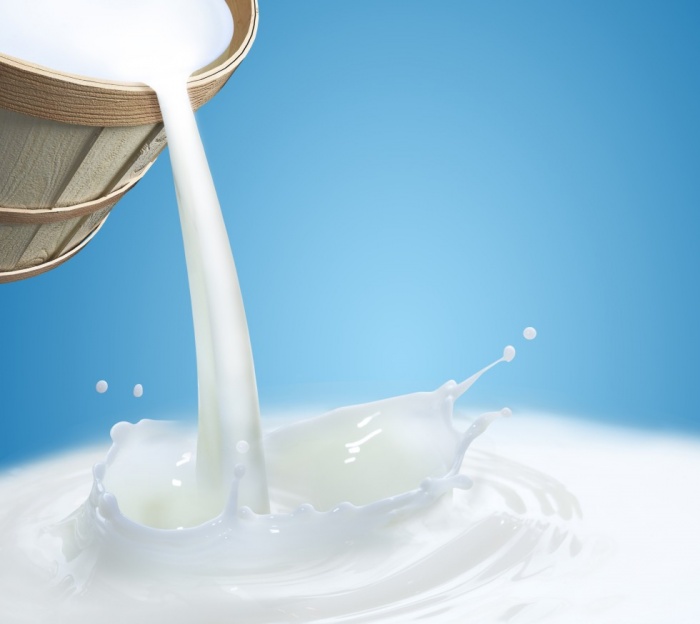By: Rabbi Sholom H. Adler, Director of Industrial Kosher, Kashrus Administrator
“Hello, this is Meir Schwartz*, am I speaking with Rabbi Adler?”
“Yes”
“I’m in Costco in New York looking at a package of Kirkland Chocolate Covered Mangoes with a COR dairy symbol, but I don’t see any dairy
ingredients on the ingredient panel.”
“Correct, there are no dairy ingredients in the chocolate used by this manufacturer to cover the mangoes, however the kosher certifier of the chocolate has classified the chocolate as dairy because of halachic issues of cross contamination at the chocolate manufacturing facility. As a result, COR has to classify the chocolate covered mangoes dairy as well.”
*name has been changed
This was an actual phone conversation that I had and one that we have with consumers quite frequently at COR. In order to explain the rationale for my answer, I would like to provide definitions for the terms dairy and dairy equipment (DE).
What is Dairy?
A product is labeled dairy if it contains actual milk or cheese from kosher animals, or if it contains lactose, whey1, or any ingredients that contain milk derivatives like caseinate2. A dairy designation is significant for several reasons. First, a food manufacturer may not use these dairy ingredients in any product labeled meat or pareve. Second, the kosher consumer must be made aware that they may not eat this product after meat without waiting six hours (or less,
depending on one’s minhag). Third, most kosher dairy ingredients are not Cholov Yisroel, and for this reason, consumers should assume that ingredients marked dairy are Cholov Stam (non–Cholov Yisroel), unless stated otherwise.
What is Dairy Equipment (DE)?
Any pareve food that is processed at a high temperature on equipment that was previously used for dairy products at a high temperature (and not kosherized afterward) takes on a DE designation even if it does not contain any dairy ingredients. A DE designation is significant for consumers, because pareve products cooked in dairy equipment may not be eaten together with meat but may be eaten immediately after meat, even during the meal3.
A very well-known psak of Rav Moshe Feinstein zt”l states that in North America, since there is strict government supervision at dairies that ensures that only healthy cow’s milk gets bottled and labeled as such, milk can be consumed even if there was no hashgacha at the milking4. This is referred to as Cholov Stam.
Nevertheless, there are those who are stringent and consider such milk to be issur and, as such, will not consume it5, which provides greater significance to the DE designation. In the case where Cholov Stam milk was used in processing, the question arises if one needs to kasher the equipment after 24 hours. If it is considered kosher milk, then, after 24 hours, anything cooked in the kettle would be considered pareve6. However, if it is considered issur for those who
are stringent with Cholov Yisroel, then the kettle needs to kashered before any kosher food products can be cooked in this kettle. The DE product is then prohibited because it has the bliyos (absorption in the walls of the kettle)7 of issur8.
COR’s policy is that we do place a DE symbol on the product label so that one can be aware not to eat this product directly with meat. For those individuals who keep Cholov Yisroel, the DE symbol enables them to decide if they would consume it altogether.9
Some kosher certifying agencies take the position that labeling a pareve product as DE may be confusing or difficult to monitor properly, and therefore certify all potential DE products as dairy. As a result, consumers often attempt to uncover the product’s true status by examining the ingredient declaration on the label, but it is not always clear what the dairy ingredients are and, therefore, the consumer should be cautious about acting on such discoveries.
Examples
If a company cooks a pareve item in a kettle that was used to cook dairy and it was not kashered even though it was thoroughly cleaned, how is the product labeled? COR policy is that all pareve products made in this kettle should be labeled DE even if the kettle was not used for 24 hours.10
However, there are instances when equipment used to produce dairy products does not force a DE status on subsequent pareve products. For example, company ABC produces mixes by blending cold liquid and/or cold dry ingredients, including some dairy ingredients, no heat is used, and then follows the production with a cleaning. If there is a cleanup procedure in place which has been shown to remove any traces of dairy from the system,11 the product can be labeled pareve. If the cleanup will not achieve this, and there is leftover product in the blender after the cleanup, the product will be labeled dairy.12
Let us return to the original phone conversation I outlined above and why COR deemed a product that does not contain dairy ingredients as COR Dairy:
If a COR food manufacturer purchases an ingredient that bears a dairy designation to be used in a pareve product as an ingredient, even if it does not contain any dairy ingredients, COR will designate the product label as dairy, for the following two reasons:13
1. It is difficult to explain to the COR manufacturing facility that the purchased ingredient is halachically certified dairy, according to their kosher certifier, but not really dairy.
2. Given that the purchased ingredient’s manufacturer has a dairy designation on his product, it is very possible for a change to the ingredients to occur, without any prior notification, resulting in dairy ingredients in the actual product.
Allergen Declaration Does Not Match Kosher Designation
Another common question relates to a product’s allergen declaration. How do we explain labeling a product as COR Pareve when a
package label states “may contain dairy”? The pareve designation is given when a product is 100% dairy free from a kashrus perspective, because COR has ascertained that there is no actual dairy in the product and there is no issue of bliyos. Yet, there might be dairy allergens in the air or in a room close by and the
company is declaring this in their allergen statement for legal liability reasons.
For people with severe milk allergies this can be an issue, but it has no impact on kashrus and it is indeed pareve. This is because it is possible for a food to contain a trace level of dairy contamination, i.e. parts per million, something which might be a problem for a dairy-allergic individual, and still be considered dairy-free from the standpoint of halacha.
COR Policy
At COR, when a product contains actual dairy ingredients, the product is classified COR Dairy. If the product does not contain dairy ingredients but is produced on dairy equipment, it is classified COR DE and labeled as such on the product packaging. While not all kashrus agencies follow this approach, we at COR find that this empowers kosher consumers by providing them with the necessary information required to make an informed decision.
1 Whey is the liquid remaining after milk is curdled and strained in the production of hard cheese. The lactose (milk sugar) is then separated out
of the whey and only the whey proteins remain.
2 Caseins are a protein found in milk and are halachically dairy.
3 Y.D. 95:2
4 Igros Moshe Yoreh De’ah 1:47
5 Chelkas Yaakov 34, Teshuvos V’hanhogos (R’ Moshe Sternbuch) 1:441
6 Y.D. 95:2 Rem”a, nat-bar-nat that is aino ben yomo is permitted to be eaten with meat products.
7 This will potentially contaminate the next product produced in the same kettle.
8 Chelkas Yaakov 34, Teshuvos V’hanhogos (R’ Moshe Sternbuch) 1:441. It is important to note that there are poskim (PM”G, Mahary Bruna:78)
that permit pareve products cooked after 24 hours in kettles that were used for Cholov Akum. Even more so, according to the psak of R’ Moshe, it
is not considered Cholov Akum at all. Nevertheless, there are stringent opinions that would not permit it. For more on this topic see Sefer Cholov
Yisroel K’hilchoso (Bleier) p 107.
9 Ibid.
10 COR Psak and Policy on Dairy/DE (Document D4)
11 Ibid. It is recommended to require an allergen type of cleanup with swabbing to be considered pareve.
12 If the cleanup is basically good but not at allergen levels, it may be proper to label DE, since we are relying on bitul and those consumers who consider Cholov Stam as issur would want to avoid using the product.
13 COR Psak and Policy on Dairy/DE (Document D4)

